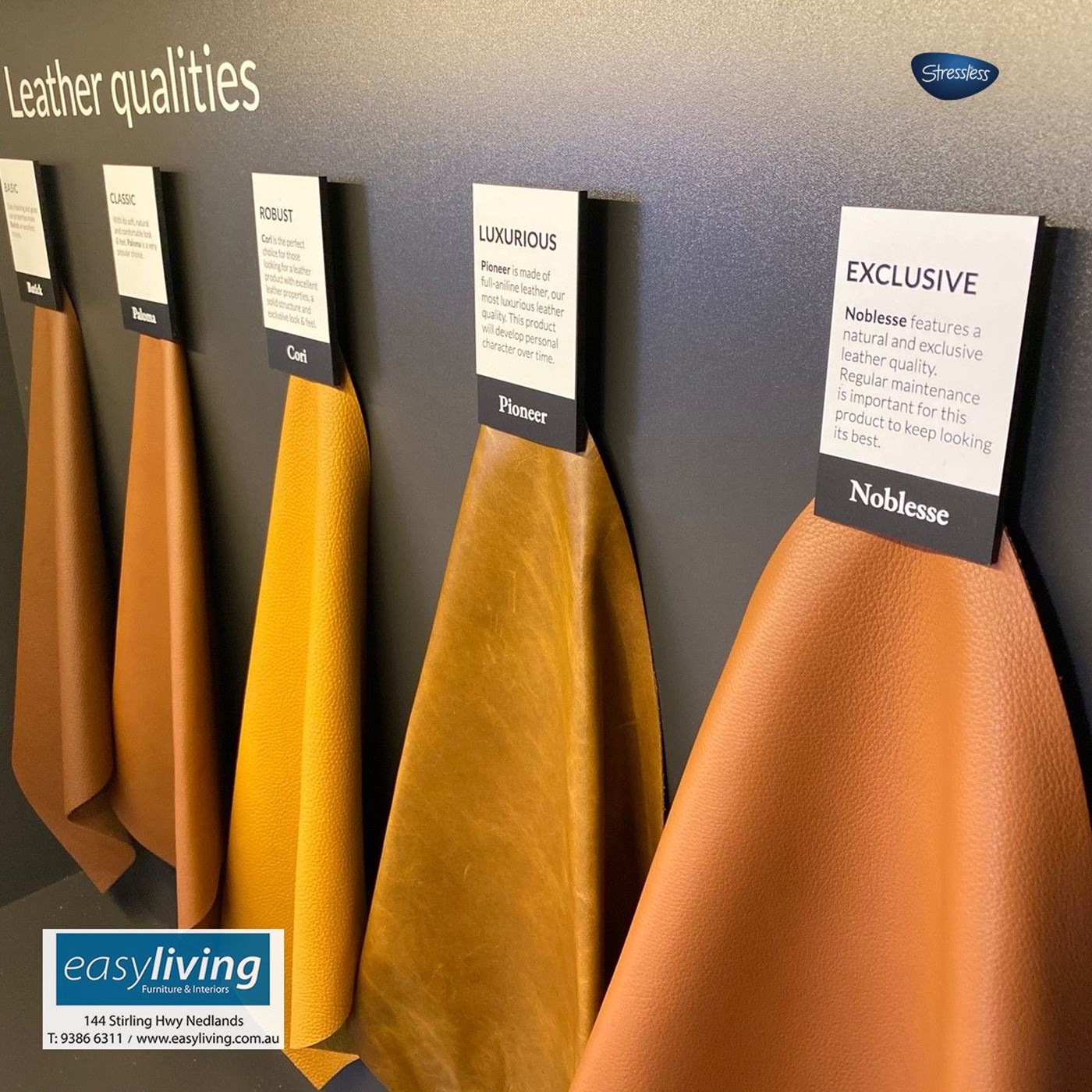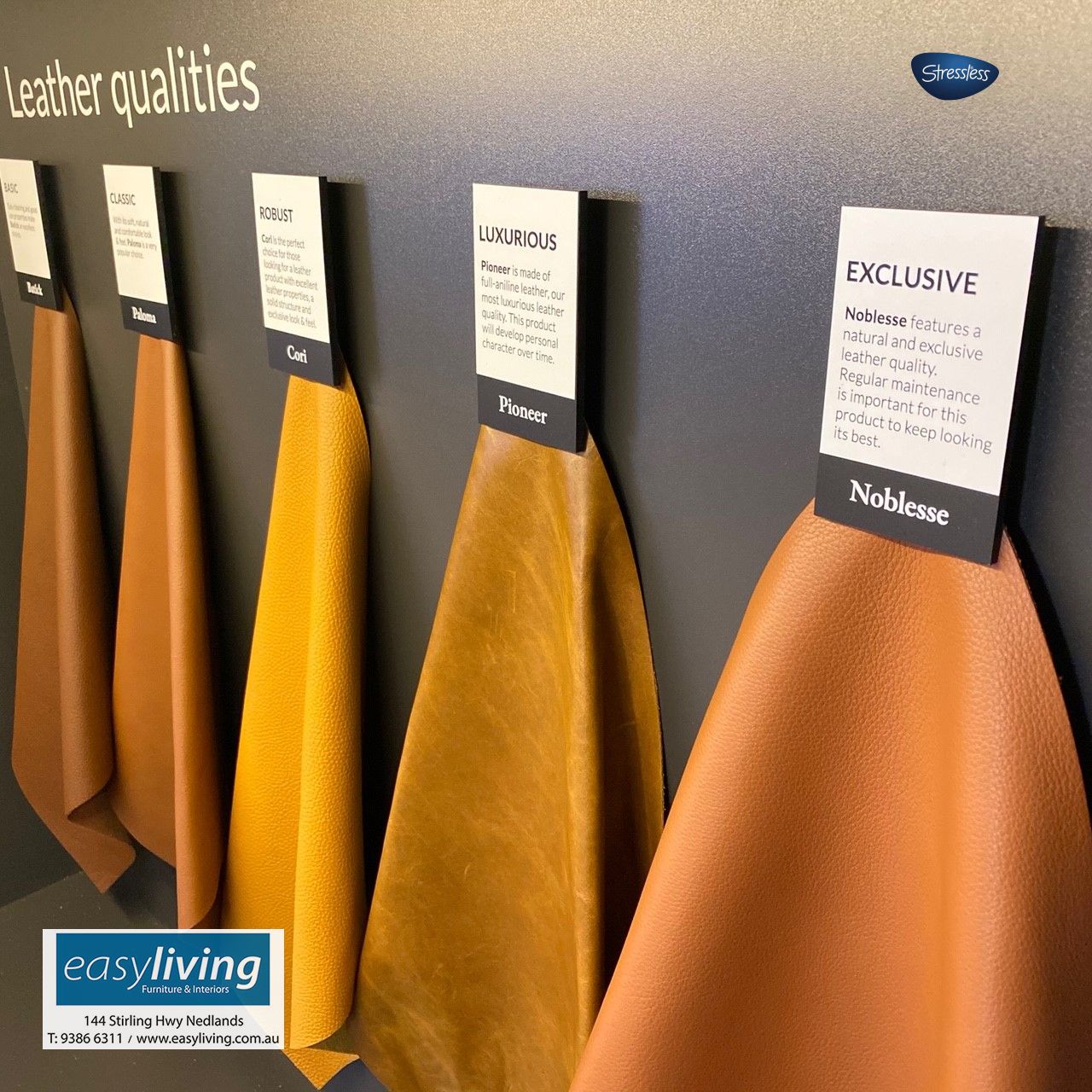Which leather is best for me?
Upholstery leather comes in a variety of categories or 'types' which can be confusing when trying to choose what is best for your own particular needs.
Trying to understand the terminology used by tanneries, wholesalers and retailers can only leave you confused and none the wiser. And that's before you hit the internet to find the answer.
Leather has been used over the centuries from clothing to saddles and of course furniture. Importantly leather is a skin which provides a tough, natural long lasting alternative provided we take good care of it.
Golden rule one.
When purchasing leather choose the 'type' suitable for its application. Discussions often swing between a want for the most natural of leathers with its softer feel (full Aniline) and the practicality of a more robust finished leather with enhanced protective properties.
This of course does change in some instances the look and feel of a product. Degrees of practicality verses maintaining a natural patina means we have a wide variety of options available.
Leather a natural material.
When a hide has gone through the tanning process it is then called leather. One characteristic of hides is that it is marked by nature, vegetation and the care the animal has been subjected to. Cattle spend most of their lives outdoors and will therefore be marked by external influences like insect bites, tears, scars wrinkles stretch marks and so on.
Choice of leather types.
Each hide is unique in its structure, appearance, nuance and size. Selection and sorting of hides into categories based on the above is the first stage of the tanning process.
It should be worth noting that all quality upholstery leather should be 100% dyed through the entire thickness.
Full Grain leather has been left untouched with all it's variation, scars and natural markings which enhances it's natural beauty. Soft and unique, only around 15% of hides are suitable for use as full grain upholstery leather.
Corrected Grain leather has all the strength of full grain but has a portion of its grain layer removed in order to increase its usable area. Almost 85% of all hides undergo some form of correction.
Leather destined for upholstery furniture.
All upholstery leathers have a finish applied for protection. (Against what some people may say). This finish can be be completely transparent in the form of a lacquer or a combination of pigments - even a wax or oil in some cases.
An Full Aniline leather is ideal for formal seating. There is a clear light surface treatment providing a certain amount of protection. Minor colour variations and grain structure should be expected with small natural markings. Regular maintenance is recommended to retain the leather's exceptional appearance.
A Semi-Aniline leather uses a semi-transparent finish, lightly coloured to enhance the dyed colour already present in the leather. More durable this simplify s cleaning but retaining many of the hides natural features.
Leather with a Pigmented finish is recommended for busy living areas or in a household with small children. The leather has a robust structure, easy to clean and popular on Corrected Grain leathers.
Summary
Hopefully this should help in deciding what leather suits your situation. Do not drown in the endless jargon associated with what is a simple product.
Concentrate on choosing the best quality chair, sofa or lounge first. Then choose your cover second, be it leather or not. You do not have to purchase the most expensive leather to get the best wear and tear, remember final selection should depend on your end use.
Beware, cheap split or buffalo leather feels like vinyl and will forever be found on many a poor quality suite !


